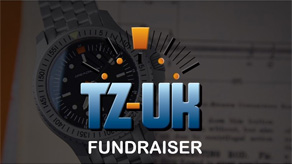
Originally Posted by
Griswold
Firstly Bob, many thanks for undertaking this major piece of dis-assembly, analysis and reassembly; and for an excellent review and report on the two movements.
I have been following the thread closely, but have refrained from comment so far as I wanted to fully digest the huge amount of information you provided for us.
From my long standing work on and with mechanical telephone systems I feel I can draw some comparisons with your findings. I guess others in different branches of 'engineering' may also have a view, though it may or may not be similar to mine; however, here goes.
The key areas that affect accuracy, repeatability, reliability and long term stability, (given suitable maintenance), of any mechanical telephone system are those where a physical interface occurs, i.e. the moving bits that touch each other; the bearings, gears, relay springs, contacts etc. Of far less importance, (other than to the eye), is the finish of those parts simply charged with holding the key areas together - but more of that later.
I think it is the same with watch movements, and whilst the areas of contact are finer and to tighter tolerances in watches than in telephone systems and the loadings and stress on them is significantly less; the principles remain the same.
From the pictures you kindly provided it would seem evident that all those physical interfaces, the pivots, jewels, gears/teeth, (those you showed at any rate), and bearings on the Seagulls were in the right place and of an equal standard and quality to those on the ETA. This would also appear to be born out by your findings on the movements accuracy.
There is nothing to suggest, either from your pictures or your report, that maintenance/servicing would be an issue as neither Seagull movement appears to have any untoward complexity - I've always been an advocate of the KISS principle where mechanics are concerned - so it would be reasonable to suspect that wear and tear would happen at a similar rate to that of the ETA. So long term stability and accuracy should also be similar to that of an ETA.
In respect of the fluff and other debris, that shows a certain failing in the assembly process/area. It was interesting to note that the second movement was better in respect to this than the first. Different assembly area/plant/process? Better QC? Who knows? But I'm sure that if Seagull were made aware of such findings, (on a global basis, not just one report), then they would quickly take steps to manage that problem out.
So what about finish? Ah, the thing that people see and draw conclusions about! When I worked on mechanical telephone systems the Clerk of Works would complain about sign-writing on relays being out of alignment. Didn't affect performance, couldn't be seen when the covers were on; and external customers would never see it anyway as they never go in there................. It's the same, I think, with watches.
And that's the major stumbling block to promoting movements such as these Seagulls. For no matter how good they are connoisseurs will look at the outward appearances of the more visible parts simply charged with holding the key areas together and make judgements based on that appearance. And, of course, close up photographs only help to exaggerate any imperfections that may exist in these lesser important areas anyway. :(
One could argue of course that it's more than that. 'Finish' can also reasonably be seen to be a reflection of the overall care a manufacturer takes in his product. But then the cost of improving the finish would only lead to improved perception and not greater accuracy or reliability. In the end it's like so many things, a compromise. One which will suit some but not others. And one that a wider public, (i.e. non-WIS), wouldn't see or care about anyway. They pick up a phone dial a number and talk to somebody.... they pick up a watch, strap it on their wrist and tell the time.
Of course, all of this could be skewed by the size of the sample. One of each type isn't necessarily a reflection of the product as a whole, Seagull or ETA. And yes, it would have been nice to have had a few more taken apart, and it would have been nice for you to have had the time, (and inclination? :wink: :lol: ), to do it. But we have to draw upon what we have.
So, would I buy a watch from Eddie with a Seagull movement in it? Dunno. But I can say it would be down to the design and individuality of the watch. From what you've shown of the movements and what they do there's nothing to put me off on that score.
Apologies for my rambling, I just felt I had to put my thoughts down as some sort of expression of my thanks for all the work you've put in on this. Thanks again Bob. :)
Originally Posted by Richie_101






 Reply With Quote
Reply With Quote




 F.T.F.A.
F.T.F.A.



